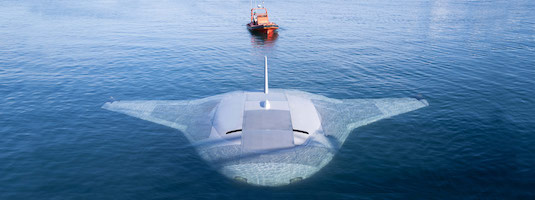Manta Ray, from Northrup Grumman, will operate long-duration, long-range missions in ocean environments where humans can’t go.
Manta Ray is:
- Payload-capable to support a variety of missions
- Autonomous, without the need for on-site human logistics
- Energy-saving, with the ability to anchor to the seafloor and hibernate in a low-power state
- Modular, for easy shipment in five standard shipping containers to support expeditionary deployment and in-field assembly world-wide
After the first photos released last month, Northrop Grumman has now released a 360° video of the in-water test campaign of Manta Ray, the full-size uncrewed underwater vehicle (UUV) prototype being developed for DARPA (Defense Advanced Research Projects Agency).
Manta Ray is an extra-large glider designed to undertake extended-duration, long-range, and payload-capable undersea missions independently, without requiring on-site human logistics.
Described as a new class of UUV, the Manta Ray is an extra-large glider designed to undertake extended-duration, long-range, and payload-capable undersea missions independently, without requiring on-site human logistics.
The first image of the Manta Ray UUV strategically showcased the tail section of the vehicle in darkness to conceal certain intriguing details—similar to the approach taken by Northrop Grumman and the U.S. Air Force with the highly anticipated B-21 Raider bomber.
